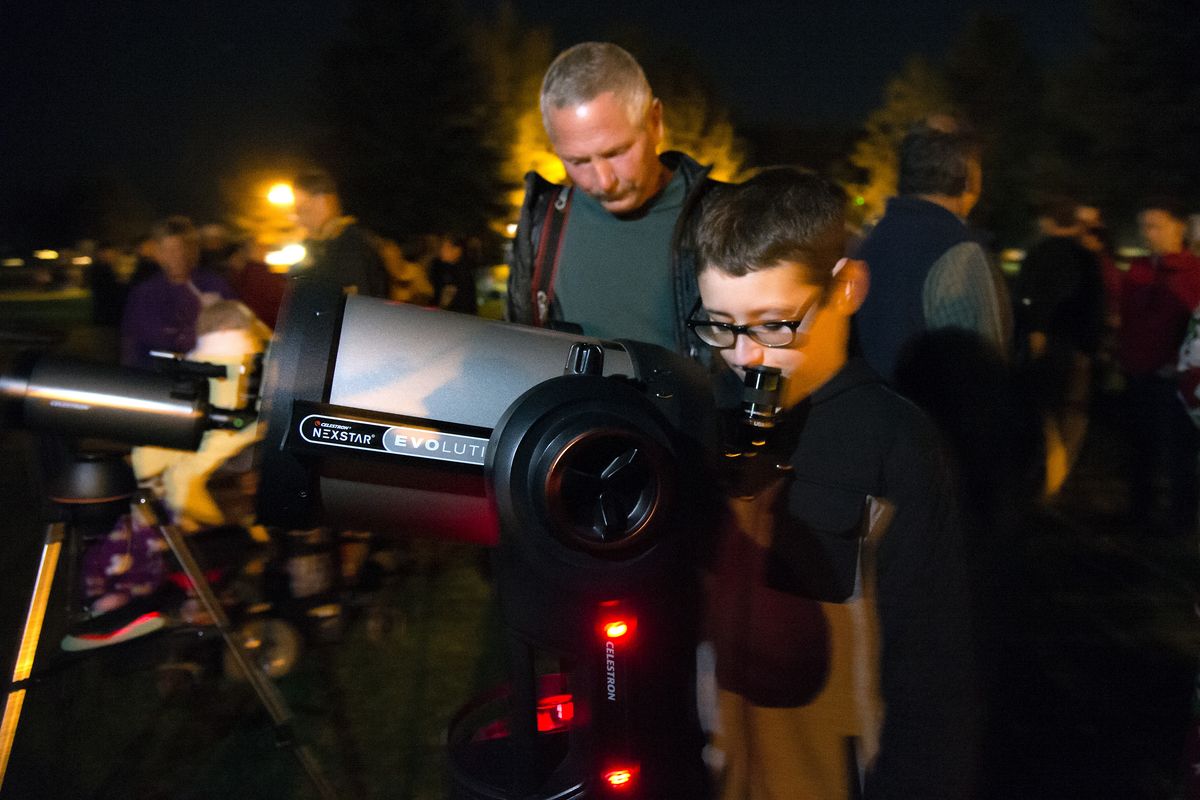Hundreds attend viewing party for supermoon lunar eclipse

A coppery-colored moon in total eclipse rose from the eastern horizon Sunday night to the delight of several hundred people gathered for a Spokane Astronomical Society viewing party.
Society members came equipped with their best telescopes and gave members of the general public a close-up view of the eclipse, which occurred while the moon was at its closest point to Earth.
The moon initially rose in partial eclipse, but as twilight took over, the moon slipped into the shadow of Earth and turned a copper color from light refracted around the edges of the planet.
“I think it’s pretty awesome,” said Daylene Isley, 9, who was with her family at the event at the Southeast Sports Complex at 46th Avenue and Altamont Street.
More than 300 people of all ages attended.
According to NASA, the last supermoon to coincide with a total lunar eclipse was in 1982. The next one won’t happen again until 2033.
A supermoon occurs when the moon reaches perigee in its slightly elliptical orbit around Earth each month. At perigee, the moon is 31,000 miles closer to Earth and appears 14 percent larger than at apogee, the farthest distance, NASA says.
Among the guests at the viewing was Julie Saucier, who accompanied her 91-year-old mother, Joan Degerstrom.
Bryan Dooley, a society member, brought his large Celestron OPC series telescope that cost $2,000, not including accessories. He had a good line of moon watchers waiting for a close peek at the rising moon.
“I’m excited,” Dooley said.
Nick Monkman, another society member, said it’s special anytime a rare celestial event occurs. “It reminds us we are a small part of a big thing,” he said of the heavens.
Cindy Fenick, a society member, said it wasn’t too long ago that her star watching was from the relaxation of a hot tub.
But the bug bit her, she said, and now she owns a large Celestron telescope with automatic tracking and finding capabilities. “I’m a newcomer,” she said. “I’m hooked.”
She programs her telescope via a Wi-Fi connection using easily seen stars. Then, the telescope and its software do the rest of the work for her.
“It maps the sky,” she said of the software program. “It knows where I am.”
She said she was thrilled that so many members of the public turned out to see a part of the creation that is our sky.
The moon rose from the eastern ridgeline about 6:50 p.m., looking at first like a more common sliver moon. But as it moved into a total eclipse at 7:11 p.m., it quickly became clear something different was happening. The total eclipse extended until 8:23 p.m.
Sunday’s eclipse was the last in a series of four lunar eclipses – known as a tetrad – every six months since early 2014, according to Sky & Telescope magazine.
The last lunar eclipse on April 4 occurred in Spokane around 4 a.m. on a cold and cloudy morning. While lunar eclipses come about twice a year, the next one is not due until 2018, the magazine said.